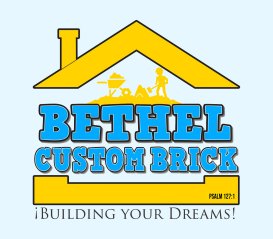Tuckpointing is a vital masonry repair technique used to restore the structural integrity and aesthetic appeal of brick or stonework. Whether it’s to address deteriorating mortar joints or improve the overall appearance of your property, professional tuckpointing ensures lasting results. Understanding the process can help homeowners appreciate the expertise required to complete this intricate repair. Here’s a step-by-step guide to how professional tuckpointing is performed.
The Process
Step 1: Assessing the Condition of the Masonry:
Before starting any repair work, a professional mason conducts a thorough inspection of the brickwork. This step involves identifying areas with damaged, crumbling, or missing mortar and evaluating the overall condition of the structure. The assessment helps determine the extent of the work required and ensures the right materials and techniques are used.
Step 2: Preparing the Workspace:
Preparation is key to a successful tuckpointing job. The area surrounding the worksite is protected to prevent damage to nearby surfaces, and any loose debris is cleared away. For larger projects, scaffolding or ladders may be set up to ensure safe and efficient access to the masonry.
Step 3: Removing Damaged Mortar:
Using specialized tools like grinders, chisels, or joint rakers, the deteriorated mortar is carefully removed from the joints. This process requires precision to avoid damaging the surrounding bricks or stones. Typically, the old mortar is removed to a depth of about 1 to 2 inches to create a clean and stable base for the new mortar.
Step 4: Cleaning the Joints:
Once the old mortar is removed, the joints are thoroughly cleaned to remove dust, debris, and loose particles. This step ensures proper adhesion of the new mortar to the brick or stone surfaces. Professionals may use compressed air, brushes, or water to achieve a clean surface.
Step 5: Mixing New Mortar:
The new mortar is prepared to match the color, texture, and composition of the existing mortar. This is particularly important for older or historic buildings where seamless repairs are critical for preserving the structure’s aesthetic and architectural integrity.
Step 6: Applying Fresh Mortar:
Fresh mortar is carefully applied to the joints using tuckpointing tools. The mortar is packed tightly into the gaps to ensure a strong bond. Professionals work methodically to fill each joint evenly, creating a smooth and cohesive appearance.
Step 7: Adding Decorative Tuckpointing Lines (Optional):
In traditional tuckpointing, a second layer of contrasting mortar is applied to create fine, decorative lines within the joints. This step enhances the visual appeal of the brickwork by mimicking the look of perfectly uniform joints.
Step 8: Finishing the Mortar:
Once the new mortar is in place, it is shaped and smoothed to match the original profile of the joints. Excess mortar is carefully removed, and the surface is cleaned to ensure a polished finish. The mortar is then allowed to cure, ensuring long-term durability and stability.
Step 9: Final Inspection:
After the mortar has fully cured, a final inspection is conducted to ensure the work meets professional standards. The mason checks for uniformity, proper adhesion, and any remaining touch-ups needed to complete the project.
Partner with Bethel Custom Brick for Expert Tuckpointing Services
At Bethel Custom Brick, we take pride in delivering high-quality tuckpointing services for homeowners and businesses in the Detroit Metro area. Our skilled team follows a meticulous process to restore the beauty and strength of your masonry, ensuring long-lasting results. Contact us today to learn how we can help maintain and enhance your brick or stone structures!


